
Newar or Nepami, are the historical inhabitants of the Kathmandu Valley and its surrounding areas in Nepal and the creators of its historic heritage and civilisation. Newars form a linguistic and cultural community of primarily Indo-Aryan and Tibeto-Burman ethnicities following Hinduism and Buddhism with Newar language as their common language. Newars have developed a division of labour and a sophisticated urban civilisation not seen elsewhere in the Himalayan foothills. Newars have continued their age-old traditions and practices and pride themselves as the true custodians of the religion, culture and civilisation of Nepal. Newars are known for their contributions to culture, art and literature, trade, agriculture and cuisine. Today, they consistently rank as the most economically, politically and socially advanced community of Nepal, according to the annual Human Development Index published by UNDP. Nepal's 2011 census ranks them as the nation's sixth-largest ethnicity/community, with 1,321,933 Newars throughout the country.

A thangka, variously spelt as thangka, tangka, thanka, or tanka, is a Tibetan Buddhist painting on cotton, silk appliqué, usually depicting a Buddhist deity, scene, or mandala. Thangkas are traditionally kept unframed and rolled up when not on display, mounted on a textile backing somewhat in the style of Chinese scroll paintings, with a further silk cover on the front. So treated, thangkas can last a long time, but because of their delicate nature, they have to be kept in dry places where moisture will not affect the quality of the silk. Most thangkas are relatively small, comparable in size to a Western half-length portrait, but some are extremely large, several metres in each dimension; these were designed to be displayed, typically for very brief periods on a monastery wall, as part of religious festivals. Most thangkas were intended for personal meditation or instruction of monastic students. They often have elaborate compositions including many very small figures. A central deity is often surrounded by other identified figures in a symmetrical composition. Narrative scenes are less common, but do appear.
Buddhism in Nepal started spreading since the reign of Ashoka through Indian and Tibetan missionaries. The Kiratas were the first people in Nepal who embraced Gautama Buddha’s teachings, followed by the Licchavis and Newar people. Buddha was born in Lumbini in the Shakya Kingdom. Lumbini is considered to lie in present-day Rupandehi District, Lumbini zone of Nepal. Buddhism is the second-largest religion in Nepal. According to 2001 census, 10.74% of Nepal's population practiced Buddhism, consisting mainly of Tibeto-Burman-speaking ethnicities, the Newar. However, in the 2011 census, Buddhists made up just 9% of the country's population.

The culture of Nepal encompasses the various cultures belonging to the 125 distinct ethnic groups present in Nepal. The culture of Nepal is expressed through music and dance; art and craft; folklore; languages and literature; philosophy and religion; festivals and celebration; foods and drinks.

Nepal Sambat is the lunar calendar used by the people of Nepal. The Calendar era began on 20 October 879 AD, with 1141 in Nepal Sambat corresponding to the year 2020–2021 AD. Nepal Sambat appeared on coins, stone and copper plate inscriptions, royal decrees, chronicles, Hindu and Buddhist manuscripts, legal documents and correspondence. Though Nepal Sambat is declared a national calendar and is used widely in Nepal, it is mostly used by the Newar community whereas Bikram Sambat (B.S) remains the dominant calendar throughout the country. All the major festivals are based on Bikram Sambat along with official purposes.
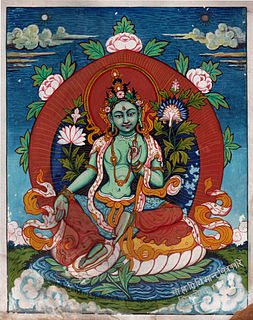
Chitrakar is a caste within the Newar community of the Kathmandu Valley in Nepal. The Newar caste system is divided according to profession. Accordingly, Chitrakars were painters and mask makers. In Nepal Bhasa, this caste is called "Pun" (पुं) or "Puna". The literal translation of the word Chitrakar from Sanskrit is image maker where "Chitr" in Sanskrit means an image, and "akar" the maker.
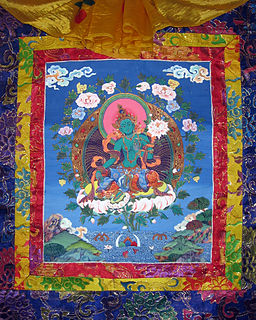
Paubhā is a traditional religious painting made by the Newar people of Nepal. Paubhas depict deities, mandalas or monuments, and are used to help the practitioner meditate. The Tibetan equivalent is known as Thangka.

The National Museum of Nepal is a popular attraction of the capital city of Kathmandu. About a century old, the museum stands as a tourist destination and historical symbol for Nepal. Being the largest museum of the country of Nepal, it plays an important role in nationwide archaeological works and development of museums. For the residents of Kathmandu, the monument serves to relive the battles fought on the grounds of Nepal. The main attractions are collection of historical artworks and a historical display of weapons used in the wars in the 18-19th century. The museum has separate galleries dedicated to statues, paintings, murals, coins and weapons. It has three buildings — Juddha Jayatia Khate Sala, Buddha Art Gallery and the main building which consists of natural historical section, cultural section and philatelic section.

Newar Buddhism is the form of Vajrayana Buddhism practiced by the Newar people of the Kathmandu Valley, Nepal. It has developed unique socio-religious elements, which include a non-monastic Buddhist society based on the Newar caste system and patrilineality. The ritual priests (guruju), vajracharya and shakya form the non-celibate religious sangha while other Buddhist Newar castes like the Urāy act as patrons. Uray also patronise Tibetan Vajrayanin, Theravadin, and even Japanese clerics.
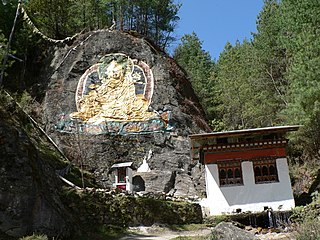
Bhutanese art is similar to Tibetan art. Both are based upon Vajrayana Buddhism and its pantheon of teachers and divine beings.

Nepalese Painting or Nepali Painting begins with the religious paintings with Hindu and Buddhist subjects, almost all Newa art by the Newari people of the Kathmandu valley. These traditional paintings can be found in the form of either wall paintings, cloth paintings called paubha, or manuscripts. They used conservative technique, style, and iconography in their works for centuries.

The ancient and refined traditional culture of Kathmandu, for that matter in the whole of Nepal, is an uninterrupted and exceptional meeting of the Hindu and Buddhist ethos practiced by its highly religious people. It has also embraced in its fold the cultural diversity provided by the other religions such as Jainism, Islam and Christianity.
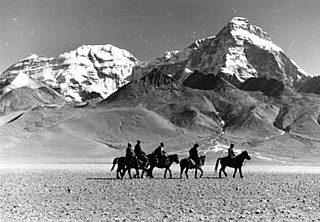
Lhasa Newar refers to the expatriate Newar traders and artisans who traveled between the Kathmandu Valley and Tibet from centuries ago. These Nepalese merchants conducted trade between Nepal, Tibet and Bengal, India over the Silk Road, and acted as a bridge for economic and cultural exchanges between South Asia and Central Asia.
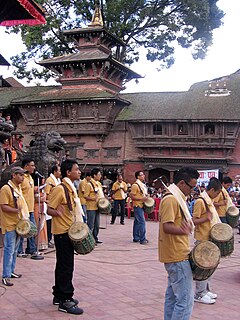
Gunlā Bājan is devotional music played by the Newars of Nepal. "Gunla" is the name of the tenth month in the Nepal Sambat calendar, which corresponds to August in the Gregorian calendar and "bajan" means "music" and "music playing group".

Nepal Mandala is an ancient confederation on the Indian subcontinent, marked by cultural, religious and political boundaries which lies in present-day central Nepal. It consists of the Kathmandu Valley and surrounding areas. The rule of the indigenous Newars in Nepal Mandala ended with its conquest by the Gorkha Kingdom and the rise of the Shah dynasty in 1768.
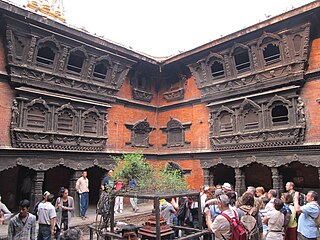
Newār window refers to the elaborately carved wooden window which is the distinguishing feature of traditional Nepalese architecture. The ornate windows have been described as a symbol of Newar culture and artistry. The level of design and carving of the Newar window reached its peak in the mid-18th century. They are found on palaces, private residences and sacred houses across Nepal Mandala.

Sthāpit is a Nepalese caste from the Newa people of the Kathmandu Valley in Nepal. Sthapits are part of the Uray group which includes Tuladhar, Kansakar, Tamrakar, Bania, Sindurakar, Selalik Kasthakar and other castes. Their religion is Newar Buddhism and their mother tongue is Nepal Bhasa.

Raj Man Singh Chitrakar (1797-1865) was a Nepalese artist in the mid-19th century who worked for the British and Nepalese courts producing a large number of pictures. He especially contributed to the illustration of natural history subjects, particularly birds, and in his watercolor painting he introduced European styles into a traditional scene dominated by votive art. Raj Man Singh was the first to apply the Western concepts of lighting and perspective, and is credited for the appearance of three-dimensional effects in Nepalese painting. Scholars have described him as a pioneer in Nepalese art, although largely unknown until Brian Houghton Hodgson's tutelage.

Tej Bahadur Chitrakar was a Nepalese artist who had a prolific artistic career in the early 20th century. He was one of the leaders in the development of contemporary art in Nepal in the early 20th century. Chitrakar spearheaded the trend of creating art using new techniques for its aesthetic value, and introduced a new style in the milieu of traditional art which is essentially religious and follows descriptions laid down in ancient texts.

The Vidhyeshvari Vajra Yogini Temple - also known as the Bijeśvarī Vajrayoginī, Bidjeshwori Bajra Jogini, Bijayaswar, Bidjeswori, or Visyasvari Temple - is a Newar Buddhist temple in the Kathmandu valley dedicated to the Vajrayāna Buddhist deity Vajrayoginī in her form as Akash Yogini. The temple stands on the west bank of the Bishnumati river next to the ancient religious site of the Ramadoli (Karnadip) cremation ground and is on the main path from Swayambhunath stupa to Kathmandu.





















